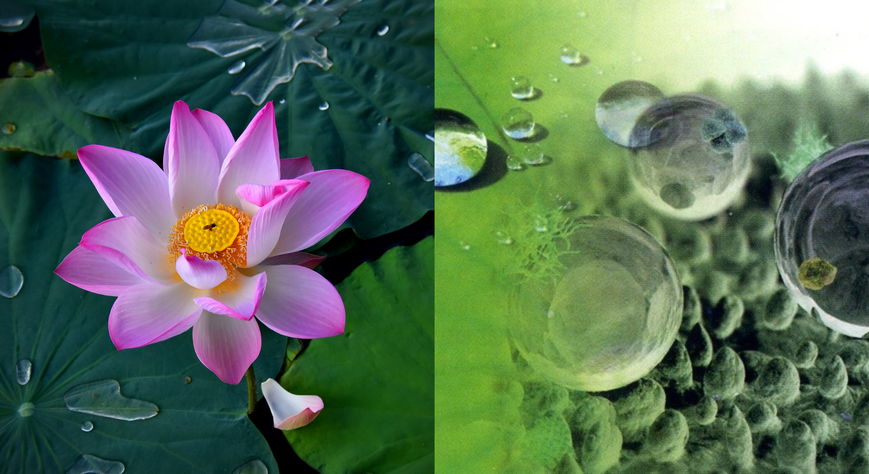Biomimicry. Design inspired by nature (II)
14 / 12 / 2020
A few weeks ago we mentioned that nature can help us find solutions for everyday problems. Natural resources are an endless source of inspiration when it comes to designing. That is why we will now compile more examples of biomimicry present in the history of design all these years.
We hope they also inspire you!
Non-stick properties: The surface of lotus leaves presents a coarse and very irregular microstructure that repels water and dirt. Following this pattern, Lotusan Paint presents a non-stick system, keeping facades clean and using rainwater to complete the cleaning process.
Adherence: The flowers of stickyweed plants are filled with small hooks that stick to the hairs of the animals that accidentally brush them. This is how the fruits of these plants are dispersed by animals. Velcro was conceived by trying to replicate this behavior of nature, as it allows to grab or close something by using two strips that stick to each other when brought together.
Echolocation: Some terrestrial mammals, like bats, and some sea mammals, like dolphins, killer whales or sperm whales, use echolocation to know the exact position of their prey.
Radars for speed control on roads and for the location of planes or ships were inspired by it.
Reflectivity: The cobwebs of the garden spider have filaments that reflect UV light, preventing birds from crashing against them. By adding similar reflecting structures to glass, birds will not crash into windows unnecessarily.
Thermoregulation: Termites in the Savannah, in spite of living in very hot areas, keep the inside of their nests below 30 °C by means of a complex circulation and ventilation system. This capacity for thermoregulation has inspired the design of buildings to decrease the air conditioning needs, as in the Eastgate center, in Harare (Zimbabwe).







